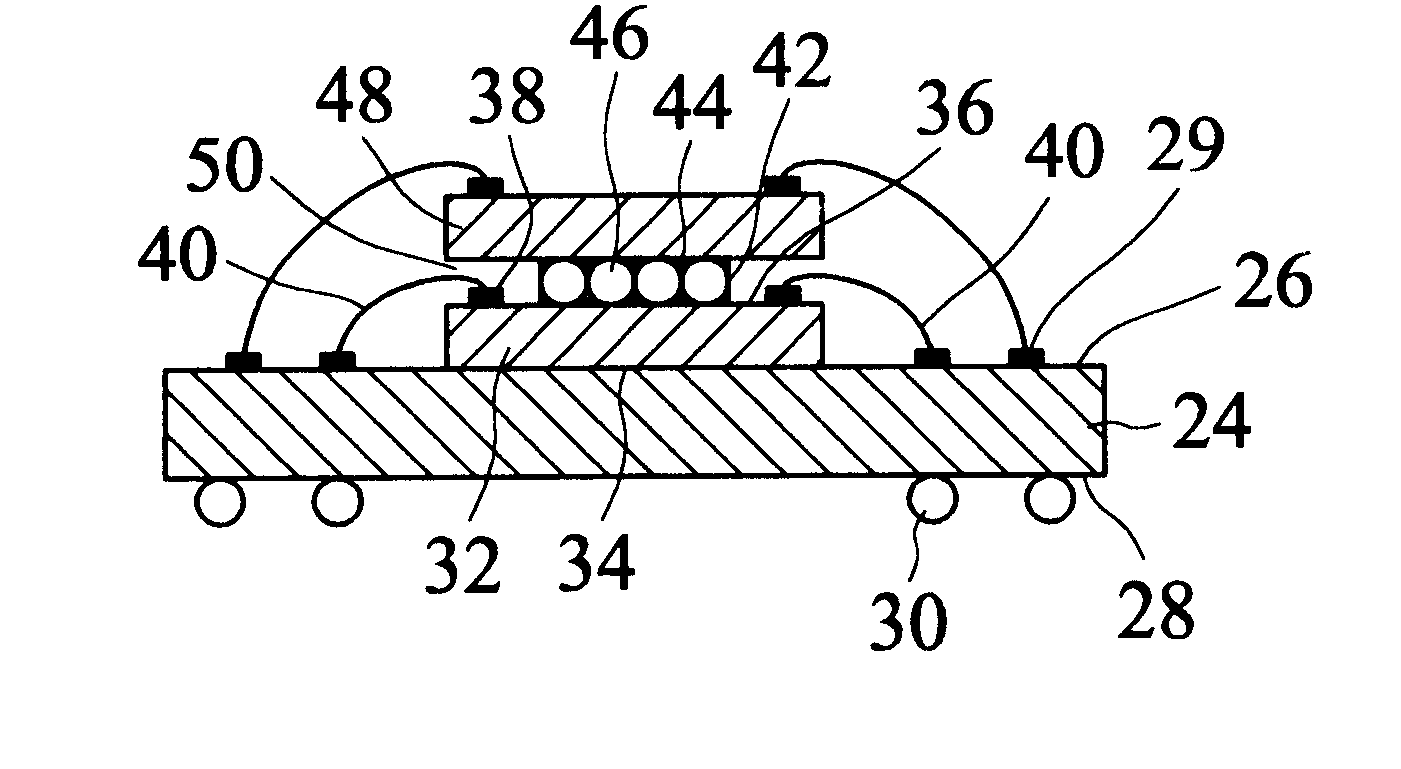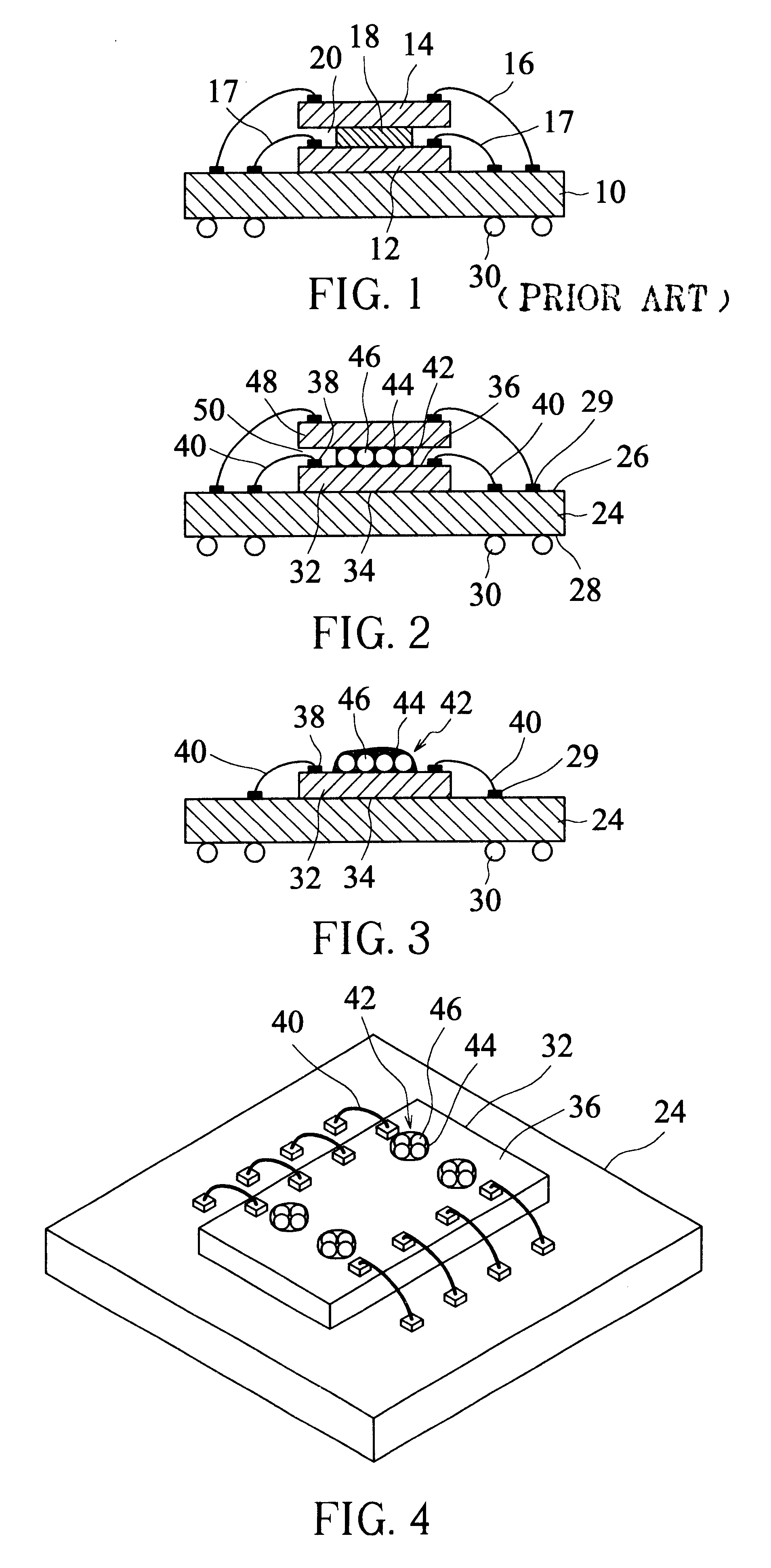Structure of stacked integrated circuits
a technology of integrated circuits and structures, applied in the direction of electrical equipment, semiconductor devices, semiconductor/solid-state device details, etc., can solve the problems of difficult to make small, thin, light products, and the above-mentioned structure has the disadvantages
- Summary
- Abstract
- Description
- Claims
- Application Information
AI Technical Summary
Benefits of technology
Problems solved by technology
Method used
Image
Examples
Embodiment Construction
Referring to FIG. 2, the structure of stacked integrated circuits according to the invention includes a substrate 24, a lower integrated circuit 32, a plurality of wirings 40, an adhesive layer 42, and an upper integrated circuit 48.
The substrate 24 has a first surface 26 and a second surface 28. The first surface 26 is formed with signal input terminals 29 for transmitting the signals from the integrated circuit to the substrate 24. The second surface 29 is formed with signal output terminals 30 for transmitting the signals from the integrated circuit to the circuit board (not shown). The signal output terminals 30 can be connected to a plurality of metallic balls 30 arranged in the form of a ball grid array (BGA).
The lower integrated circuit 32 has a first surface 34 and a second surface 36. The first surface 34 is adhered onto the first surface 26 of the substrate 24. The second surface 36 is formed with a plurality of bonding pads 38 for electrically connecting to the substrate ...
PUM
 Login to View More
Login to View More Abstract
Description
Claims
Application Information
 Login to View More
Login to View More - R&D
- Intellectual Property
- Life Sciences
- Materials
- Tech Scout
- Unparalleled Data Quality
- Higher Quality Content
- 60% Fewer Hallucinations
Browse by: Latest US Patents, China's latest patents, Technical Efficacy Thesaurus, Application Domain, Technology Topic, Popular Technical Reports.
© 2025 PatSnap. All rights reserved.Legal|Privacy policy|Modern Slavery Act Transparency Statement|Sitemap|About US| Contact US: help@patsnap.com


